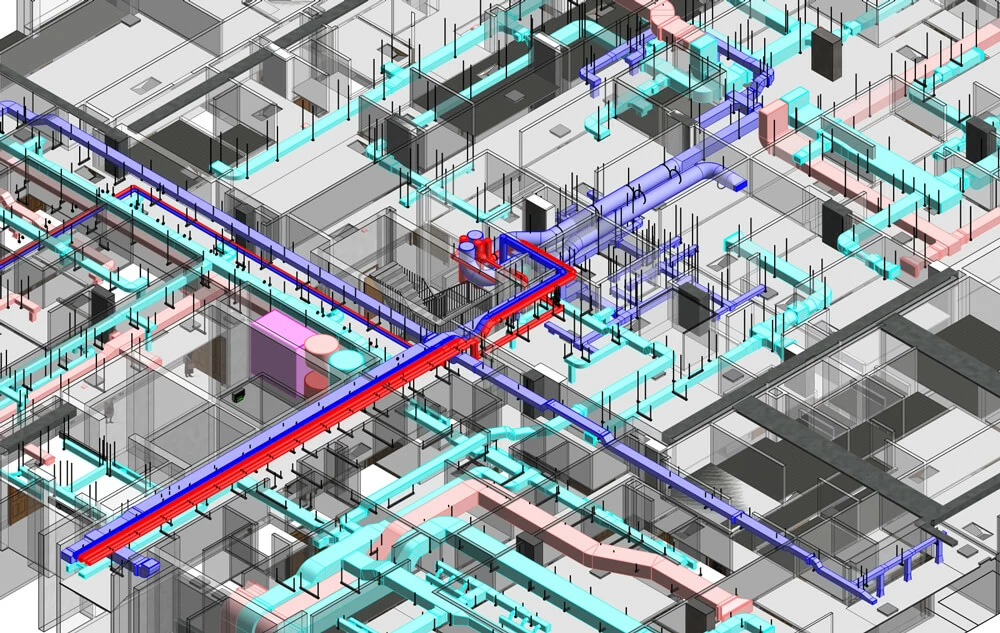In the realm of modern construction, the integration of Mechanical, Electrical, and Plumbing (MEP) services plays a pivotal role in shaping the efficiency, functionality, and sustainability of buildings. This blog aims to explore the critical significance of MEP services in building design, highlighting their impact on energy consumption, occupant comfort, and overall operational efficiency.
Understanding MEP Services
MEP services encompass a diverse range of systems and components designed to provide essential functions within a building. Mechanical systems include heating, ventilation, and air conditioning (HVAC), electrical systems encompass lighting, power distribution, and communication networks, while plumbing systems cover water supply, drainage, and fire protection. Integrating these systems seamlessly into the design process is essential for optimizing building performance and functionality.
Enhancing Energy Efficiency
One of the primary objectives of MEP in building design is to maximize energy efficiency. Through strategic design considerations and technological advancements, MEP engineers can minimize energy consumption while ensuring optimal performance. Energy-efficient HVAC systems, LED lighting, and smart building automation technologies are just a few examples of how MEP contribute to reducing the carbon footprint of buildings and lowering operating costs over time.
Optimizing Indoor Environmental Quality
Beyond energy efficiency, MEP also play a crucial role in enhancing indoor environmental quality (IEQ). Proper ventilation systems ensure adequate air circulation and filtration, improving indoor air quality and occupant health. Additionally, lighting design and control systems influence visual comfort, productivity, and overall well-being. By prioritizing IEQ considerations in building design, MEP contribute to creating healthy, comfortable, and productive indoor environments.
Integrating Sustainable Practices
In recent years, sustainability has emerged as a central focus in building design and construction. MEP play a key role in implementing sustainable practices by incorporating renewable energy sources, such as solar panels and geothermal heating systems, into building designs. Water conservation measures, efficient waste management systems, and green building certifications further underscore the commitment to environmental stewardship facilitated by MEP service.
Ensuring Operational Efficiency
Efficient operation and maintenance of building systems are essential for long-term sustainability and cost-effectiveness. MEP services facilitate the design of systems that are easy to operate, monitor, and maintain, minimizing downtime and maximizing operational efficiency. Additionally, predictive maintenance technologies leverage data analytics and sensor networks to identify potential issues proactively, further optimizing system performance and reliability.
Collaborative Design Approach
Effective integration of MEP services into building design requires a collaborative approach involving architects, engineers, contractors, and stakeholders. Early coordination and communication among multidisciplinary teams ensure that MEP systems are seamlessly integrated into the overall design vision, avoiding conflicts and minimizing costly rework during construction.
Case Studies
To illustrate the real-world impact of MEP services on building design, several case studies can be examined. From energy-efficient office buildings to sustainable healthcare facilities, showcasing successful implementation strategies and measurable outcomes highlights the tangible benefits of prioritizing MEP service in construction projects.
Challenges and Opportunities
Despite the numerous advantages of MEP service, certain challenges exist, including budget constraints, regulatory requirements, and technological complexities. Addressing these challenges requires innovative solutions, ongoing education, and collaboration across the industry. However, these challenges also present opportunities for innovation, creativity, and continuous improvement in MEP design and implementation.
Conclusion
MEP services play a fundamental role in maximizing efficiency and performance in building design. From enhancing energy efficiency and indoor environmental quality to integrating sustainable practices and ensuring operational efficiency, MEP service are indispensable for creating buildings that are functional, comfortable, and environmentally responsible. ENGISOFT ENGINEERING - BIM Staffing & BIM Services by prioritizing MEP service in the design process and embracing collaborative approaches, stakeholders can unlock the full potential of buildings as sustainable assets for future generations.


No comments yet